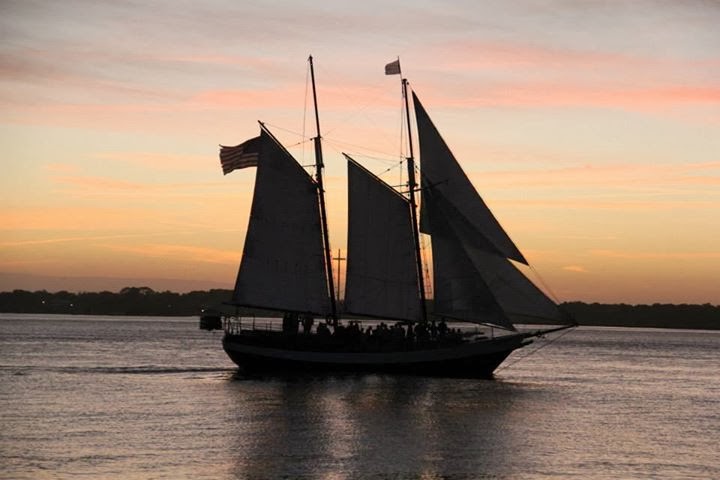on his writing. He recorded his experiences while sailing through the extreme weather, his journal entries reflecting a delight in seeing flying fish, porpoises, and birds, and was awed by the beauty of nature, including a rare sighting of a nocturnal rainbow on his voyage. After being hospitalized for sunstroke he returned to England, and then on to New York city where he deserted his ship to pursue a career in writing. His first tome of poems, Salt-Water Ballads, and the famous poem, Sea Fever, attest to the immeasurable influence tallship sailing had on him.
Sea Fever
 |
| Photo by Sara Leclaire |
And all I ask is a tall ship and a star to steer her by;
And the wheel’s kick and the wind’s song and the white sail’s shaking,
And a grey mist on the sea’s face, and a grey dawn breaking,
I must go down to the seas again, for the call of the running tide
Is a wild call and a clear call that may not be denied;
And all I ask is a windy day with the white clouds flying,
And the flung spray and the blown spume, and the sea-gulls crying.
I must go down to the seas again, to the vagrant gypsy life,
To the gull’s way and the whale’s way where the wind’s like a whetted knife;
And all I ask is a merry yarn from a laughing fellow-rover,
And quiet sleep and a sweet dream when the long trick’s over.